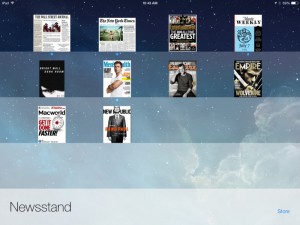IDC estimates 111.9 million wearable devices will be in use by 2018, so its inevitable employees will drive enterprises adoption of these things, just as they drove enterprise use of iPhones, iPads and other mobile devices. 51 per cent of business leaders “identify wearables as a critical, high, or moderate priority for their organization,” says Forrester Research.
Also read: WWDC: 21 all-new Apple Watch features
To help secure these devices, Good Technology has introduced and updated secure email and collaboration app, Good Work for Apple Watch, which provides secure access to emails and meeting notes.
Productivity and security
To see the way ahead consider the enterprise significance of the latest Apple patents in which it describes a means to share Apple Watch files by shaking hands. It is inevitable these things will be used for all kinds of collaboration in unified communications or SaaS deployments. However, to support such use IT pros will want to implement complete policy control over the device – they have to, if only to satisfy data protection law.
“Enabling enterprise mobility means securing data accessed and used on all devices, whether smartphones, tablets or wearables,” said Christy Wyatt, chairman and CEO of Good Technology, “allowing greater productivity for employees while also providing complete policy controls for IT.” To enable this the company has updated the policy controls it places inside its Secure Mobility Platform for IT.
Among other features IT admins can enable/disable notifications and the Good Work watch app using a Web-based management console. Good also supports the new Apple Watch wrist detection restriction – which should enable enterprises to implement tighter MDM policy.
Intelligent agents
This is only the beginning of the emergence of Apple Watch in the enterprise – huge investments are already being made in this and there is a growing ecosystem of solutions to empower the wearable enterprise. For example, Apple and IBM have begun introducing Apple Watch support to some of their jointly developed MobileFirst for iOS apps. That is by no means the only example of enterprise class Apple Watch solutions.
Many mistake the Apple Watch as an object defined only by its existing features, but that’s a terrible error of judgement. It is important to understand that the impact of these devices is not determined by the features they offer in isolation, but what they offer when used in conjunction with back end systems, as Forrester analyst, J.P. Gownder explains, “Solving business problems depends on linking wearable devices to back-end systems. And the usability of wearables in turn depends upon intelligent agents.”
Digital transformations
These technologies will be critical to the digital transformation of everything Apple is already deeply enmeshed within.
“The market for company-provided wearables will be larger than the consumer market in the next five years,” writes Gownder. “Want proof? In 2012, in the US alone, 7.7 million people worked in healthcare positions that could benefit from wearables, while 3.2 million worked in public safety, and a whopping 13.8 million worked in sales roles. Not all of these professionals will adopt wearables, but their companies have every incentive to deploy wearable technologies and business processes that create positive financial and/or customer service results for customers.”
With iOS already the dominant mobile platform in any serious enterprise and a host of developers active in the space, Apple Watch seems set to seize its time.



